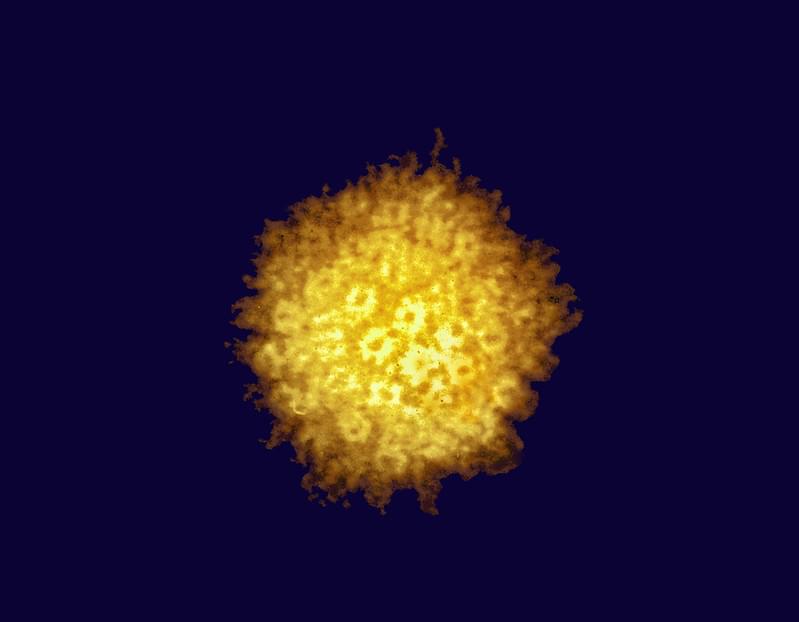Jun 4, 2024
Elemind unveils sleep-enhancing ‘electric medicine’ headband
Posted by Shubham Ghosh Roy in category: neuroscience
Neurotech device uses electrical stimulation to shift brainwave patterns, helping wearers fall asleep faster.
Neurotech device uses electrical stimulation to shift brainwave patterns, helping wearers fall asleep faster.
Scientists from Nagoya University in Japan have identified the role of serotonin neurons in linking glucose availability to reproductive health. Their research demonstrates how elevated glucose levels stimulate serotonergic neurons, leading to the release of serotonin, which in turn activates kisspeptin neurons responsible for reproductive hormone release. These findings explain why poor nutrition affects fertility and suggest potential treatments for depression-induced infertility through the use of selective serotonin reuptake inhibitors (SSRIs). Credit: SciTechDaily.com.
Scientists from Nagoya University in Japan have clarified the connection between energy levels and fertility in both animals and humans. They discovered that signaling from serotonin neurons plays a crucial role in maintaining reproductive function by detecting glucose availability, which in turn enhances the release of the reproductive hormone gonadotropin. These findings also offer an explanation for the reduced fertility seen in individuals with depression and suggest potential treatments. The study was published in Scientific Reports.
People who lack sufficient nutrition encounter problems with their reproductive health. For example, ballet dancers can experience menstrual disruptions, and women who fast can struggle to conceive. According to a new study led by Designated Associate Professor Sho Nakamura and Professors Hiroko Tsukamura and Satoshi Ohkura, one of the main factors that affect a person’s reproductive health is glucose availability.
The study is based on the analysis of large studies involving tens of thousands of people, both with and without mental health conditions.

For decades, the study of genetic disease was focused on genes that code for protein. But scientists have now identified a novel neurodevelopmental disorder that is caused by mutations in a gene that does not code for protein, called RNU4-2. These mutations lead to neurological symptoms that cause cognitive dysfunction, but have not previously been linked together as one disease. These findings have been reported in Nature Medicine.
In this work, the investigators analyzed whole-genome sequencing data from over 5,000 cases of intellectual disability and over 46,000 unaffected individuals. The research focused on unusual variations in the sequences of 41,132 genes that do not code for protein. The research revealed a gene that is apparently a common cause of neurodevleopmental problems. The scientists also determined that these mutations often arise spontaneously, and are not usually inherited from a parent.
The neurotransmitter dopamine has often been linked to pleasure-seeking behaviors and making stimuli paired with rewards (e.g., food, drinks) valuable. Nonetheless, the processes through which this key chemical messenger contributes to learning have not yet been fully elucidated.
The higher number of electrodes allows more data to be transmitted to and from the brain, impacting the interface system’s capabilities.
Precision Neuroscience has set a new world record by implanting 4,096 electrodes in a human brain, surpassing Neuralink.

It’s estimated that almost half of the world’s population — about 3.7 billion people under the age of 50 — are infected with (HSV-1), which can cause oral herpes. About half a billion people between the ages of 15 and 49 are infected with herpes simplex virus-2 (HSV-2), the cause of genital herpes. There are therapeutics that can eliminate some symptoms of herpes, like blisters, but there is no cure for the infection, and those who are infected can spread the virus to others. Studies have suggested that HSV-1 may increase the risk of dementia, and HSV-2 raises the risk of HIV infection.
Scientists have now developed a gene therapy that can eliminate as much as 90 percent of oral herpes and 97 percent of genital herpes infections in pre-clinical mouse models. The gene therapy also reduced the level of virus that was released from an individual in a mouse model of the infection. These reductions took about one month to be completed, and more of the virus seemed to be eliminated over time. The work has been reported in Nature Communications.

Chapters: 0:00 Colin Wright Highlights 0:48 Colin Wright: A Horrible Person, A Transphobe? 3:43 Did This Piss Colin Off? 6:03 Humans Will Always Do Magical Thinking 8:32 If We Stand Up Together… 9:48 The Fundamental Misunderstanding / Fish 12:48 What Activists Get Wrong (Secondary Characteristics) 15:48 The ‘True’ Hermaphrodite 17:48 Is There A Male or Female Brain? 21:48 Judith Butler’s Contradiction 24:48 Individual Liberty 27:48 Young Girls & Older Men 30:48 Cross-Dressers Getting Aroused 34:18 How Sex Is Determined In Nature 37:38 Why Do Men Have Nipples? 38:58 Why Don’t Testicles Have Rib Cages? 40:18 Creationism vs Evolution (Joe Rogan) 44:18 Alex Jones & Gay Frogs 45:08 What Does ‘Theory’ of Evolution Mean? 48:08 Other Competing Theories? 51:28 Faith vs Science 53:48 Danger of Reality Denial 57:43 A Heretic Colin Admires.
It is estimated that living neurons can use over 1 million times less energy than the current digital processors we use.
A startup in Switzerland has built a unique computer processor made from 16 tiny brains made from human tissue, basically a living computer.